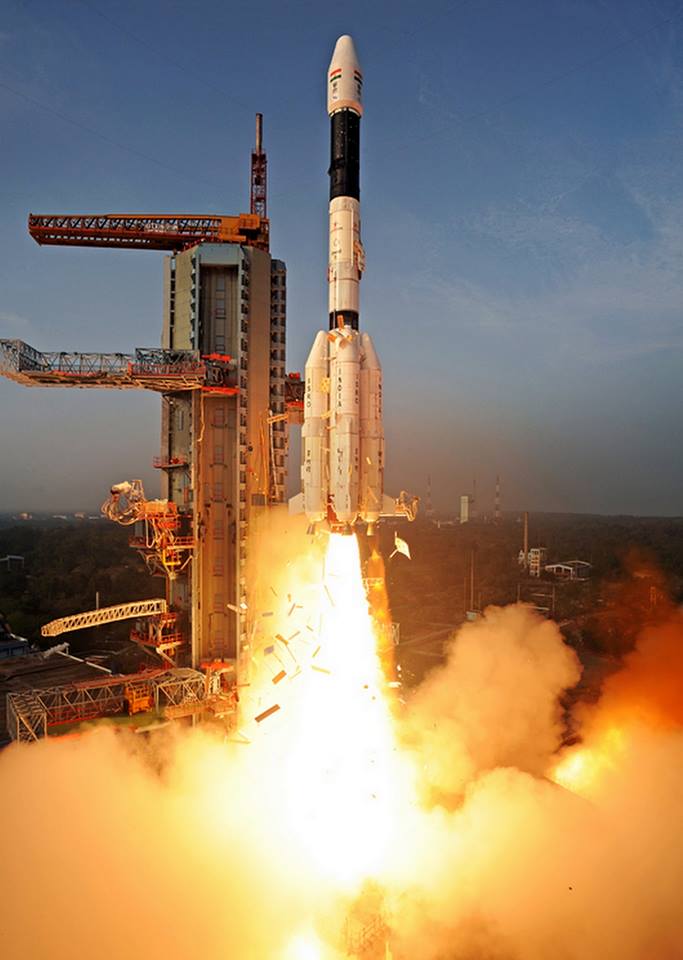The figure shows the GSLV D5 launch just a few seconds after ignition. GSLV is a three stage vehicle, 49 m tall with 414 t lift off weight. It is capable of placing satellites weighing 2-2.5 tons into geosynchronous transfer orbit (GTO)
On January 5, 2014, India successfully launched it’s rocket to put a 2000+ KG satellite in geosynchronous orbit. So, what is so special about it? To answer this question, we need to go back in time. The entire space program had started in early 80′ where the actual planning took place. India contemplated to achieve mastery over space technology in four stages over a period of 15 years. The various steps involved are:
- SLV (Simple firing of a Satellite Launch Vehicle)
- ASLV (Short for Augmented Satellite launch Vehicle)
- PSLV (Short for Polar Satellite launch Vehicle) – objective is to put sun synchronous satellites in orbit
- finally, GSLV (Short for GeoSynchronous Satellite Launch Vehicle) – to put communication satellites in a Earch Stationary Orbit.
We had developed and achieved self sufficiency in the first 3 categories of satellites fairly quickly, and almost as per the planned schedules. India had sought the help of USSR (then) in mastering the GSLV technology, as it requires putting a satellite in an orbit that is 36,000 KM above earth, and requires a technology, known as Cryogenic Engine Technology and uses liquid Orxygen and liquid Hydrogen at temperatures far below normal temperatures. Russia (Formerly USSR) agreed to initially supply a few engines and then deliver the technology (technology transfer) in stages. However, after supplying 2 or 3 engines, Russia gone back on their promise under extreme pressure from other developed nations. Under these circumstances, coupled with sanctions from USA and other countries against supply of any space related components or technology to India, India was left all alone with very few friends to rely on.
The success is not without failures. Several missions with indigenous and imported engines had failed, with many people doubting whether India could achieve this mile stone at all! Originally, India’s self reliance in launching GSLV rocket was supposed to be achieved by 1995. However, given the circumstances, the indigenous development had been delayed significantly due to failures in perfecting the Cryo engine technology.
Hearty congratulations to Dr. K. Radhakrishnan and his team for successful launch of GSLV D5. India is looking forward to many more such achievements from our distinguished scientists and technocrats!
Visit official website here: http://www.isro.org


